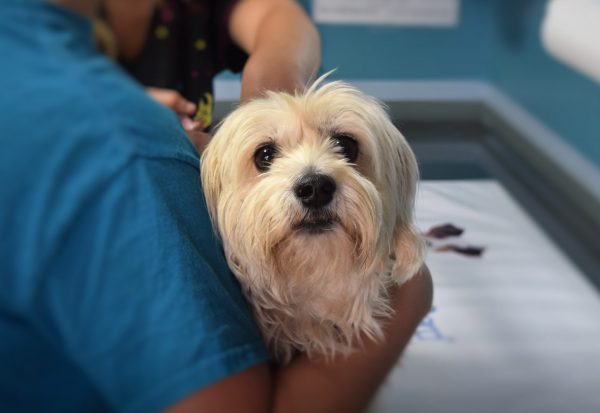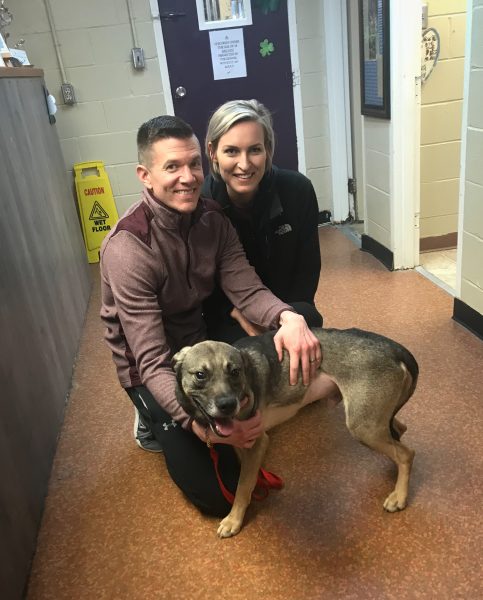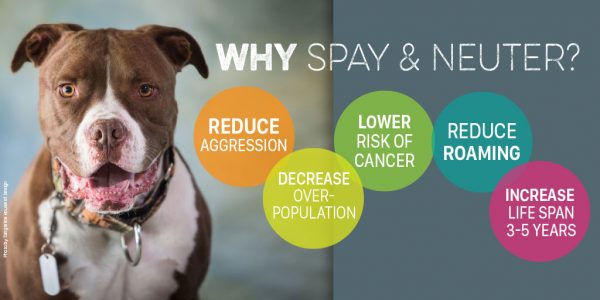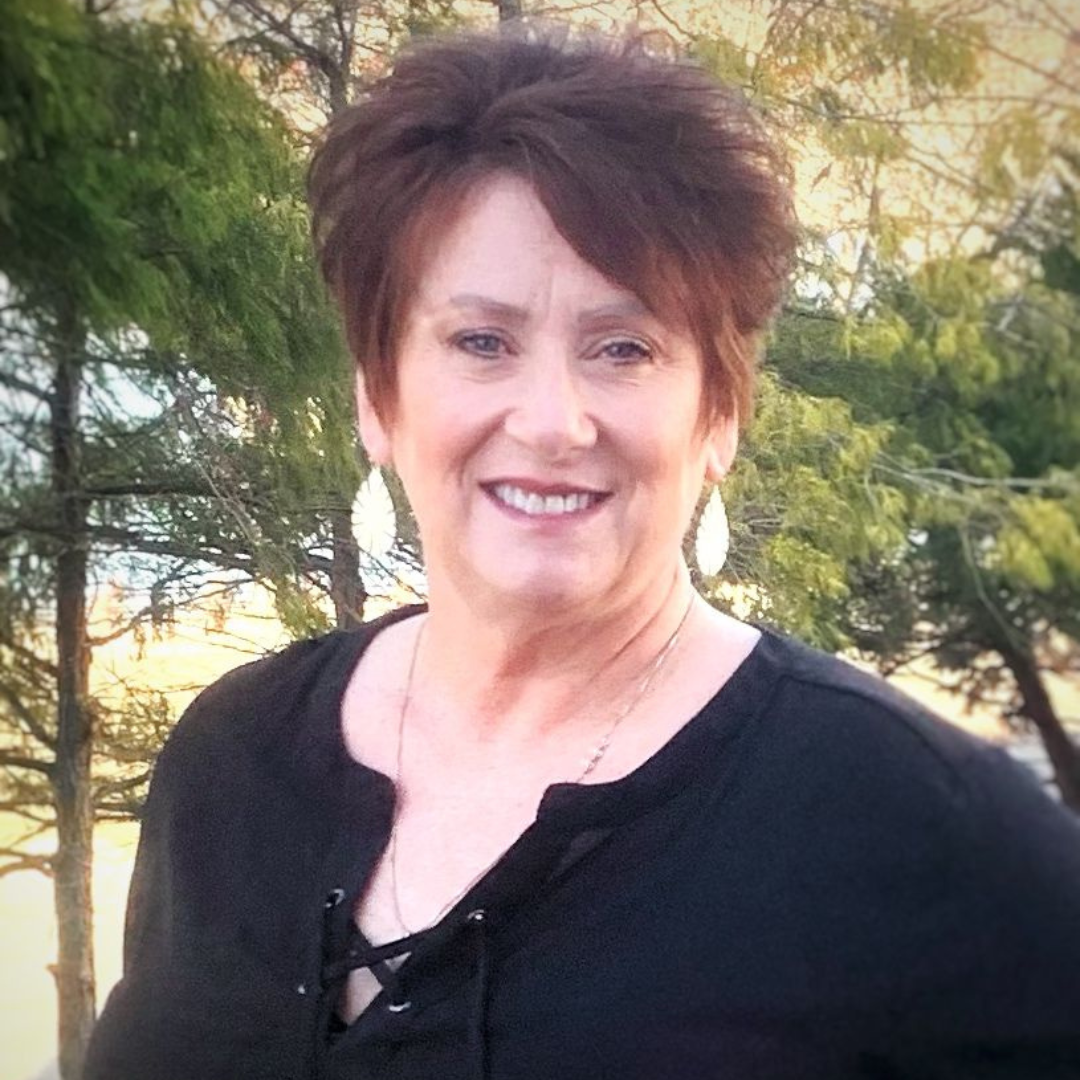WHY I CARE
I have been involved in animal rescue for many years now. As a child, I aspired to become a veterinarian, but after my first advanced high school math class, I discovered that I’m just not a STEM kind of student. But even though my dream didn’t pan out in exactly the way I envisioned at age 11, I’ve still been given ample opportunity to work with animals.
When my children were young, I wanted a part-time job that was flexible and enjoyable. I had already suffered through too many jobs where I spent Sunday night dreading Monday morning. So when I saw an ad for a shelter worker, it seemed to be a logical fit for my needs and interests. I applied and, eventually, became the first employee hired specifically to work inside the Ohio County Animal Shelter caring for the animals and the physical facility.
When the time came for me to return to full-time employment, I moved on to become a veterinary assistant at Hearthside Home Veterinary Services, where I worked for nearly 11 years. During this time, Hearthside provided veterinary care for the shelter animals, so I was still involved in a roundabout way.

In 2005, I married Doug McCroskey, humane officer and shelter director. His job involves long hours, and I often accompany him on after-hours calls. For more about that, read Adventures of the Dog-Catcher’s Wife From the Shotgun Seat.
In these capacities, I have had an insider’s view of the workings of the shelter since 1999, and I know firsthand how many animals come through their doors. There were many days when a dozen dogs and twice that number of cats might arrive.
But fortunately, times seem to be changing.
How does the “dog pound” (which, by the way, is an outdated term in today’s rescue community) run out of its primary commodity? My experience leads me to believe that it’s a combination of things.
SPAY AND NEUTER
First of all, it seems the message made famous by TV host Bob Barker is finally being taken seriously: “Help control the pet population — have your pet spayed or neutered!” People were slow to take Barker’s message to heart, but these days, it seems that the majority of pet owners do have their dogs and cats altered.
Most reputable rescue groups and shelters require adopters to alter the animals they adopt. These groups also work diligently to educate the public about the benefits of spaying and neutering pets. Rescue groups frequently speak to schools and civic organizations about the importance of pet alteration, and word finally appears to have taken root and spread.
SOCIAL MEDIA
Social media is a double-edged sword for animal rescue organizations. It can offer prime real estate for keyboard warriors to criticize and complain about animal situations that they often are woefully uninformed about, but social media is also a wonderful marketing tool.
Many Facebook sites, such as Lost and Found Pets — Upper Ohio Valley, offer a forum where area residents who have either lost or found animals can post photos. I have seen hundreds of pets returned home this way. Doug explains that when his team picks up a stray dog, the first thing they usually do is post a photo on the shelter’s Facebook page. This often leads to a stray being reunited with a worried owner before the animal ever arrives at the shelter.
The internet is also a perfect place for shelters to post photos and stories about adoptable pets, who often seem to know how to strike just the right adorable pose designed to melt the viewer’s heart. Many local shelters have their own websites and social media pages, and Petfinder can direct a prospective adopter to a shelter that has the exact pet he or she is seeking.

“Social media allows us to market our animals before adopters even walk through our doors,” Doug says. “We have even had a few instances where people who are homebound have seen our animals online, reached out to us for more information via Facebook, decided to adopt, and then we were able to deliver their new furry friend to them.”
LIFELONG COMMITMENT
I also believe that more people are beginning to understand that adopting an animal is a lifetime commitment that can last up to 20 or more years. Of course, some will never comprehend that concept, and we must continue to educate and inform others until that message sinks in.
AFFORDABLE ALTERATION OPTIONS
Owners with tight budgets often need a little help to cover spay and neuter surgery. Low-cost clinics such as the Tiffany Dlesk Spay & Neuter Clinic have been instrumental in bridging the gap between what owners know they should do and what they are actually able to do. “These clinics allow more people to afford the cost of spaying or neutering,” Doug says. “This is having a measurable impact on the number of animals that are being surrendered.”
This affordability has made it possible for countless families to do what’s best for their dogs and cats.
And doing what’s best hundreds of times over has led to a very tangible outcome — empty shelter runs and cages.
According to PETA’s website, an unaltered female dog and her offspring can produce 67,000 puppies over a six-year period. An unspayed female cat and her babies can spawn an incredible 370,000 kittens in 7 years. Those numbers make it easy to see how the responsibility of hundreds of owners is making a major impact!
THE LESS-VISIBLE, TAIL-WAGGING NEWS
It may not be as readily apparent as the sight of an empty shelter, but the less-visible fantastic news here is that euthanasia numbers at area shelters are also trending downward.
In the early years at the Ohio County Animal Shelter, the number of dogs surrendered annually was close to 1,000, and canine euthanasia rates were in the neighborhood of 20 percent. In 2019, however, the Ohio County shelter took in only 365 dogs. Of that number, only eight were euthanized, all because of illness or aggression. Not even one was sacrificed simply because the shelter was full, and that is a major win for an open-admission shelter.
If you run the numbers, you’ll find that makes Ohio County’s 2019 canine euthanasia rate roughly 2 percent, down from 3 percent in 2018. According to the American Humane Society, the average canine euthanasia rate among shelters nationwide is approximately 56 percent. That is a huge difference and it indicates that, locally, we are doing something right!

Positive progress is being made every year, and anyone who has contributed to that progress is to be commended. Animal rescue work is tough, both mentally and physically, particularly for the person saddled with the task of performing humane euthanasia. As the wife of a man who has shouldered that unimaginable load for many years, I can attest to the fact that Doug is much happier since that burden has been significantly lifted.
It’s easy to see how people who do this work on behalf of innocent creatures without the means to advocate for themselves can be easily burned out by the many challenges they face. But at this moment in at least three local counties, these workers’ hearts are full — all because their cages are empty.
• A lifelong Wheeling resident, Ellen Brafford McCroskey is a proud graduate of Wheeling Park High School and the former Wheeling Jesuit College. By day, she works for an international law firm; by night, (and often on her lunch breaks and weekends) she enjoys moonlighting as a part-time writer. Please note that the views expressed in her writing are solely her own and do not necessarily reflect those of anyone else, including her full-time employer. Through her writing, Ellen aims to enlighten others on causes close to her heart, particularly addiction, recovery and equal rights. She and her husband Doug reside in Warwood with their clowder of rescued cats, each of whom is a direct consequence of his job as the Ohio County Dog Warden. Their family includes four adult children, their spouses and several grandkids.




